Fishing Report: March 26, 2021
Sheepshead action still going well inshore
Every Friday morning, Captain Dylan Hubbard of Hubbard's Marina joins Good Day to fill viewers in on his fishing forecast as we head into the weekend. Here is his fishing report for March 26, 2021.
MADEIRA BEACH, Fla. - Every Friday morning, Captain Dylan Hubbard of Hubbard's Marina joins Good Day to fill viewers in on his fishing forecast as we head into the weekend.
Here is his fishing report for March 26, 2021.
Inshore
Mackerel action is going well throughout the area along the bay’s deeper flats, edges, channels, passes and along the beaches, especially fishing piers along the beach and any large structures in good moving water holding bait will have active mackerel.
The bite is always best for these guys in the early part of the day when the water is more calm and clear. However, you can go after them anytime of day. Chumming an area with some cut or whole greenbacks will concentrate and excite the mackerel and light tackle with a long shank 1ot hook free lining live white bait into that excited school or throwing those gotcha plugs through there is just incredible fun.
If you catch a handful, they make great smoked fish spread, but many enjoy them fresh on the grill or even fried.
Pompano action picked up considerably around the area, it seems. We had a nice push of these amazing eating fish into more northern passes like John's Pass and Clearwater Pass this week while before numbers were not as strong it seemed. Doug Bryan, from St. Pete, and some of his buddies fishing John's Pass this past week with some live shrimp free lined out on an outgoing tide caught a handful of beautiful pompano along with black drum, trout, and even a big bull redfish.
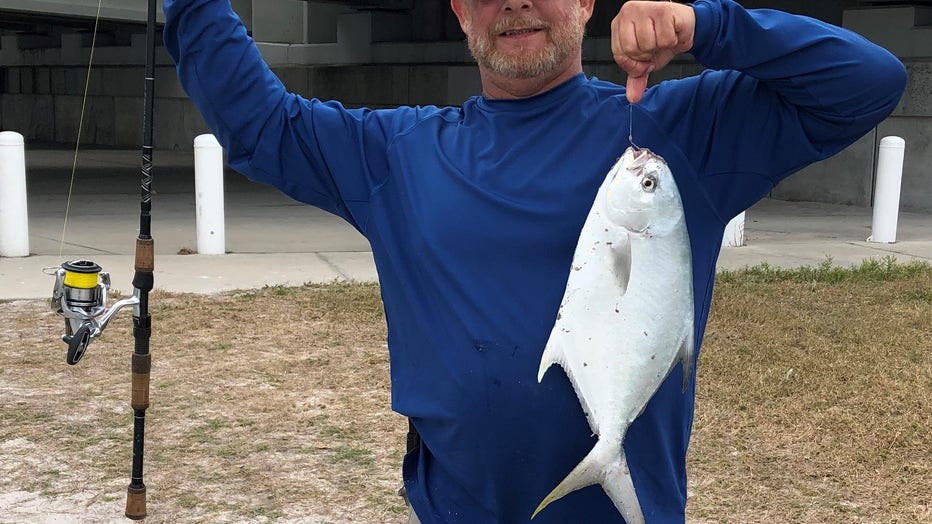
Pompano caught inshore (Courtesy: Captain Dylan Hubbard)
Similar stories from Clearwater to Anna Maria seem to be the norm when that bite is on.
Those pompano are looking for crustaceans along the sandy bottom like sand fleas, crabs, or shrimp. That is why the pompano jigs work so well to get 'em chewing. It is all about that little puff of sand that leaded jig makes when its bouncing along the bottom. It gets their attention, and they think it is a sandflea diving for cover and they just cannot help but to react. Therefore, when working those jigs, you want to keep it right on and along the bottom not retrieving but just bouncing it along the sandy bottom and edges while only retrieving slack.
Flounder bite has been steady this past week around those sandy areas adjacent to structures or grass flats where they can ambush passing baits. These guys are the kings of opportunistic feeders and will only hit what they can grab from their sandy cover on the bottom. Look for them on the down tide side of structures like docks, bridges, grass flats or oyster bars.
Nothing beats an artificial shrimp or live shrimp for flounder other than the secret weapon of creek chubs or mud minnows. You can find those little almost snook-looking smaller fish along the surf of local beaches and islands and inland shorelines that have small vertical black lines. You can cast net these guys or buy them from select bait shops and they are absolute flounder candy!
Snook have moved out of those creeks and rivers, but are still around the mouths of those sounds, bays, and rivers as many are moving back to the passes. We are not seeing the huge numbers of fish but quite a few returning to the local passes around bridge lights and dock lights at night.
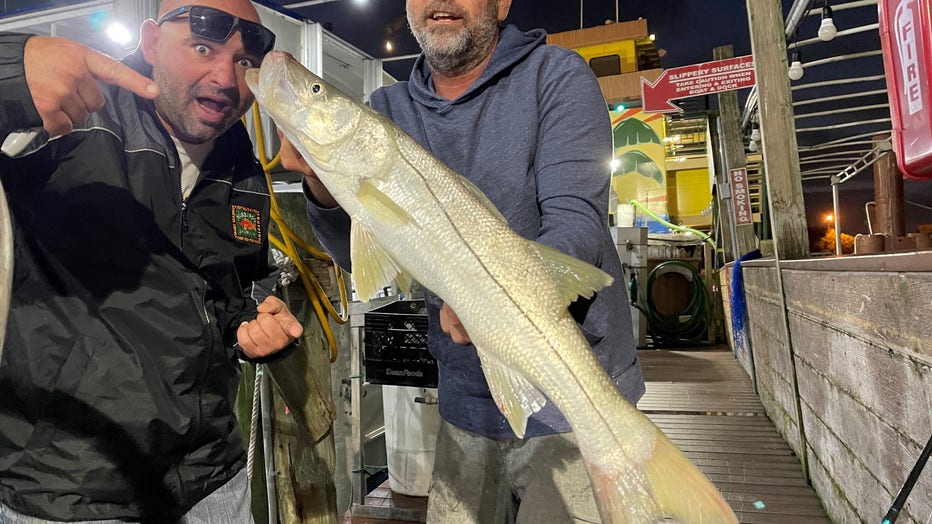
Snook caught inshore (Courtesy: Captain Dylan Hubbard)
During the day, highly-active snook around those cuts and potholes of the flats at mid-to-low tide and high tide they roam those mangrove shorelines and oyster bars.
Sheepshead action still going well around the area. I'm noticing they are slowing down a bit and many reporting a less concentrated bite, but if you stay on 'em, really set up right and wait it out, you can still get some nice sheepshead in good sizes.
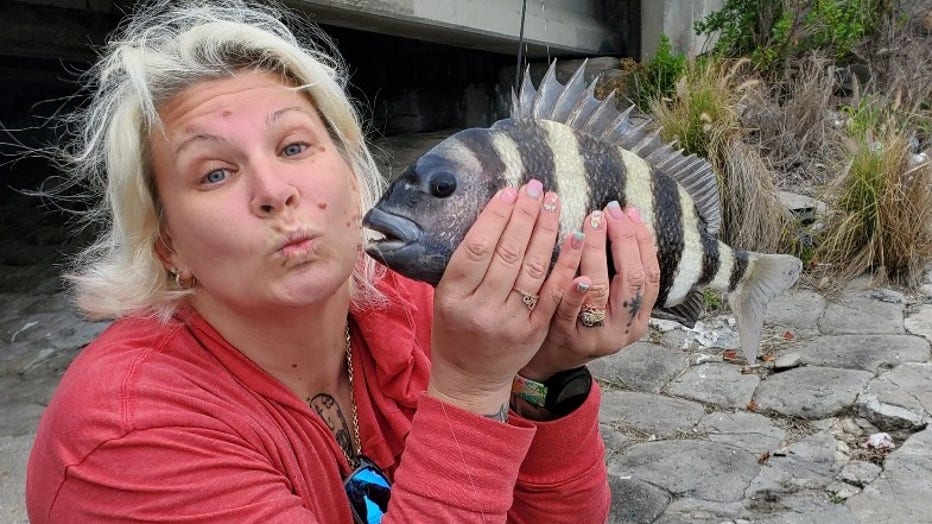
Sheepshead caught inshore (Courtesy: Captain Dylan Hubbard)
They are still loving those fiddler crabs and shrimp, but you can get them on the cut clams or oysters too. Light tackle and minimum weight around local structures like bridges, docks, seawalls are all good places to get out and capitalize on the last push of those good-eating, but hard-to-fillet sheepshead.
Black drum are still around the passes and bridges of the area and a few on the flats. They love the crustaceans like shrimp or crabs right on the bottom or close to it. They will often be around the sheepshead or cruising the passes or flats to the next structure they will explore. Occasionally, you can even find some schools moving along our beaches.
Redfish action has been steady through the area -- still from the mouth of the upper bay rivers and creeks to the mouth of Tampa Bay and local passes. We are seeing some schooling fish along those flats, mangrove shorelines and oyster bars feeding well on white bait, shrimp, and small pinfish. Also, while targeting them on artificial, the soft plastic paddle tail is still a crowd favorite.
Trout action still going well through the day and night. We are seeing regularly active trout at night around dock lights and bridge lights. During the day, we are still seeing them around those same docks and bridges too, in the passes, along the flats on potholes, cuts and edges.

Trout caught inshore (Courtesy: Captain Dylan Hubbard)
Deeper flats still the best place to look around 3-6 feet of water and look for areas they can stage up and not spend energy waiting for unsuspecting baits. Remember, when you catch one trout, there are often many more in that same vicinity.
Tarpon are showing up already in the area. We are seeing them along the bridges of Tampa Bay mostly, but some have been back in the bays too cruising the local waters looking for crabs, bigger threadfins, smaller mullet, or ladyfish. Still exceedingly early, but we will see them get more and more prolific as May draws near.
Near shore and offshore
The hogfish action has steadied for us again. While not quite as hot as it was November through early March, we are still catching a good number of hogfish on our near shore fishing trips around 30-70 feet of water.
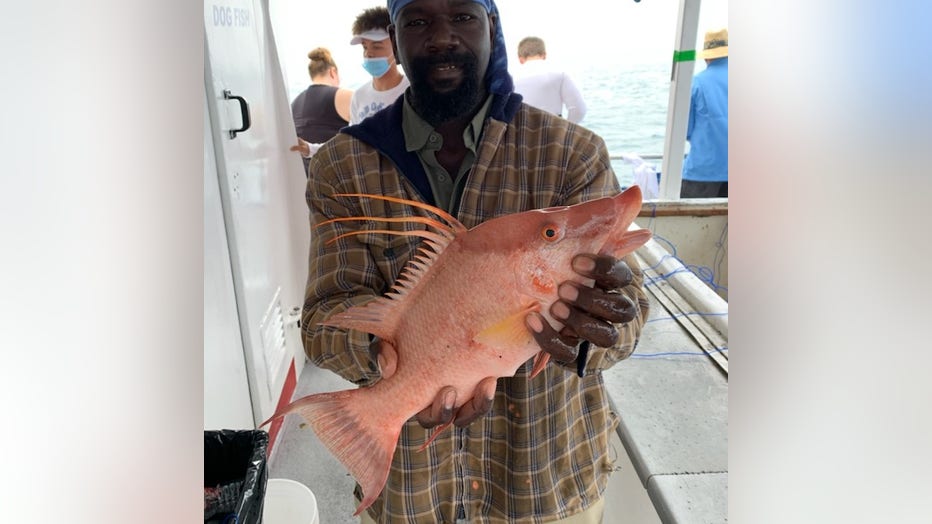
Hogfish (Courtesy: Captain Dylan Hubbard)
They seem to have moved off the ledges to more expansive areas. These guys love the live shrimp, fiddler crabs, rock shrimp and even sometimes sandfleas. Light tackle and lots of patience is required, but if you can get in a good area and fish down the more aggressive feeders eventually you will have a shot at one of these incredible eating fish.
We still get them year-round just as the water warms and they get more pressure from more anglers on the water and plenty of spearfisherman jumping in the local waters then they get seriously more leader shy and less likely to eat hook and line.
Mackerel are super thick near shore right now anywhere from the channel markers leaving the passes up to around 80 feet of water. They are anywhere from the surface to around mid-water column mostly hanging around the structures like rock piles, wrecks, artificial reefs, and such that are holding and aggregating bait fish.
You can find them out there easily by looking for birds and bait schools. Also, you can get out there to one of those larger, well-known artificial reefs and just anchor up on a up tide side and just go wild with the chum. After a short period, the water will come alive with active mackerel jumping for joy out of the water. Then, soon the kingfish will show up intermixed with those mackerel.
We are seeing some nice kingfish in the 18 to 25 pound range fairly regularly right now near shore up to 100 feet of water with the occasional big boy 25+ pounds, but still not crazy thick on the kingfish but the mackerel are there.
Further offshore, we are seeing bigger kingfish. Once past 100 feet of water, there’s better chances for more prolific larger-sized king mackerel. The water temperature is right for more to show up too. Plus, it looks like we may get another cold front still next weekend that will again lower that water temperature and slow it from heating up too fast, which will lengthen the stay of our kingfish and mackerel on their spring run by our area.
Lots of great action lately on the snapper fishing too. We are seeing very active lane snapper biting just about anything from squid to shrimp or pieces of threadfin around 30-100 feet of water consistently around that hard bottom area, ledges, bait shows and more. These guys love shrimp and lighter tackle but will eat anything.
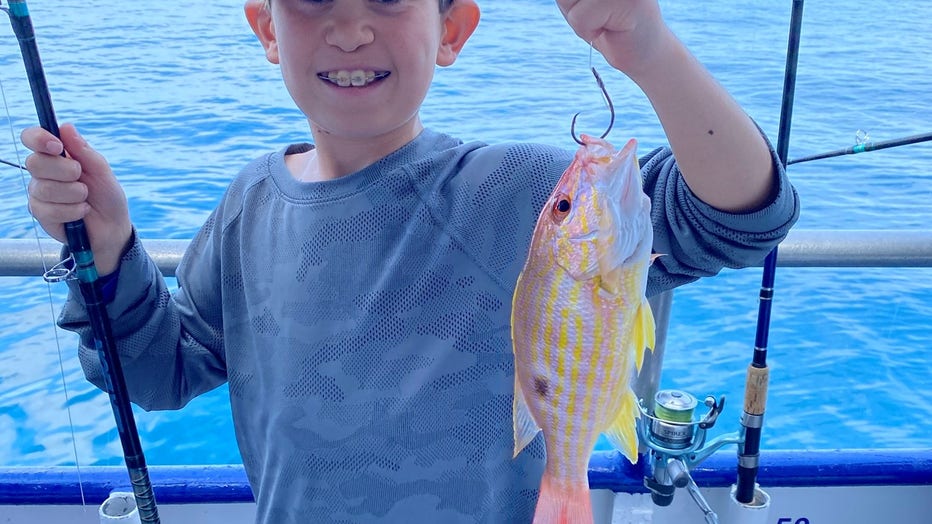
Lane snapper (Courtesy: Captain Dylan Hubbard)
The lanes seem to only be getting larger in average size and more and more prolific in our area over the course of the last 5-7 years and were enjoying all the great eating fish!
Mangrove snapper bite is steady around 80-120 feet but the bigger fish are more like 140-180 feet right now it seems, but you can put together a nice catch of mangroves in the deeper near shore waters. The double snell threadfin plug is the go too past 90-100 feet of water with lighter 30-40lb leader and 4-6ot hooks. Inside that depth, less than 90-100 feet, I prefer around 20-30lb leader and about a 3-4ot hook knocker rig or jig head with live shrimp or greenbacks.
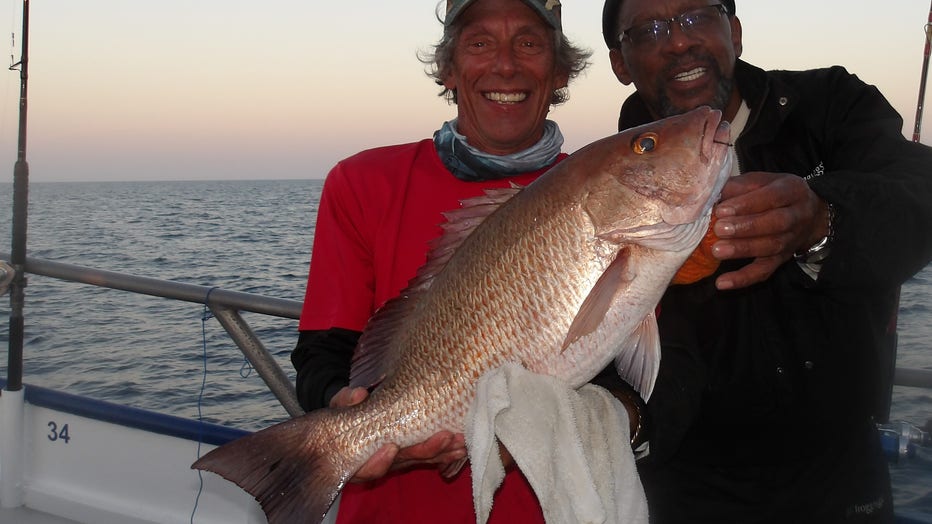
Mangrove snapper (Courtesy: Captain Dylan Hubbard)
Red grouper bite has been decent lately, but a lot of sorting going on with tons of juvenile and just under legal-sized grouper inside 120 feet of water. That deep water grouper closure or 20 fathom closure ends at the end of the month and once it does we're jetting off deep to fish around 140-200 feet of water for those fat deep water red grouper, triggerfish, big mangroves, yellowtail and more!
The near shore bite of red grouper though has been impressive compared to the last few years at least with some keeper-sized red grouper coming up as shallow as 30-40 feet. Ten to fifteen years ago, we could nearly limit out in that depth in the warmer months but lately it has been rare to see any number of keeper red grouper that shallow so we're hopeful that bite will continue to steadily increase into the summer!
For more fishing reports, photos, videos and more check out Hubbard’s Marina on Facebook, Instagram, YouTube, or Snapchat. Just simply search "HubbardsMarina" and do not forget our family motto, "If you’re too busy to go fishing, you’re just too busy!"

